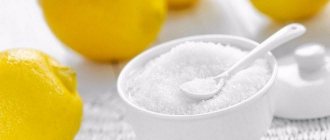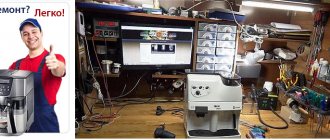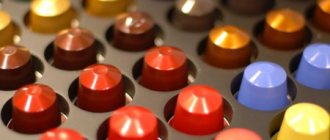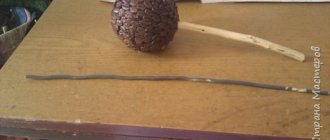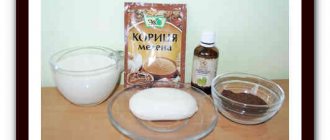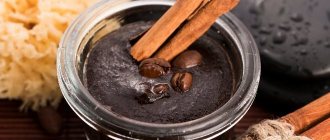Cleaning a carob coffee maker: what, where, when.
Timely and proper cleaning is a very important part of the interaction between a barista and his coffee machine. Below are some tips on what and how you often need to clean a carob coffee maker, based on Stoll Espresso’s extensive experience.
Scale and dirt are the most common reason for carob coffee makers to fail.
In addition, contaminants evenly worsen the taste of coffee. The main “pests” here are coffee oils (also called coffee fat), which are deposited in the brewing group, giving the espresso the taste of old, rancid beans.
Coffee maker and scale
In order to clean the machine from scale, you need to disassemble the hydraulic system (boiler, pipes), put all the parts in a solution of a special product with mild(!) acid, mechanically clean the parts, then wash everything with water and reassemble it again.
If you clean the machine without disassembling it, but simply by running acid through the system, then there is a high possibility of it becoming clogged with limescale formations.
In addition, together with the scale, the surface layer of iron parts will also dissolve, which in the future can lead to the release of heavy metals.
Therefore, we repeat again, in order to properly decalcify the coffee maker, it must be disassembled.
To significantly increase the time between decalcification procedures, you should use water filters or filtered water.
Our experience indicates: a carob coffee machine with a filter requires a complete descaling approximately once every 10 (!) years.
If the coffee maker is directly connected to the water supply, you need to install a special filter, the cartridge of which is changed once a year.
If the machine has an aqua tank, then you must use filtered water or a water softener.
With soft water and average intensity of use, decalcification is carried out once every 3-5 years.
Daily and ongoing cleaning
Clean the brewing group once every 2 days using a blind filter. The brewing group is cleaned with water only, without the use of chemicals.
Once every 2 weeks, remove and clean the shower screen of the brew group using a special product for removing coffee oils, for example, Clean Express. Also clean the group gasket.
Clean the brew group once a month using a blind filter and a special product.
Once every 6 months, lubricate the mechanism of the group (E61 and its variants) with food-grade silicone.
And yet, it is very useful to read and follow the advice of the coffee machine manufacturer. Closely reading the annotations of the technique is actually useful.
Coffee Equipment Food.
Caring for a carob coffee maker. Descaling (decalcification) 20.
Another fundamental step in caring for a coffee maker is cleaning the boiler from scale or decalcification. If your water is soft or of medium hardness, then you need to clean the machine 2-3 times a year, if the water is too hard, then more often. It is better to carry out decalcification using special means; previously I used chemicals from Saeco, but in the near future they are actually not on sale:
On the product from Saeko it is written: composition
Leave a comment Cancel reply
We clean with what we have at hand at home
Vinegar 9%
First, let's talk about how to clean a coffee maker with 9% vinegar. It contains alcohols, esters, food acids: malic, citric, which effectively dissolve scale.
Mix vinegar and water in a 1:2 ratio. Pour liquid into the water container and turn on the device. Wait for the water to boil and leave the coffee maker for 10-12 hours.
Then pour out the cleaning solution and rinse the device with warm water.
The next stage is running the liquid. Prepare 4-5 cups of coffee. Don't drink it - pour it out, otherwise you'll get poisoned.
If you don't rinse off the water, vinegar residue will settle on the parts. The drink will acquire an unpleasant taste and sour smell.
Lemon acid
Now about how to clean a coffee maker with citric acid. Pour 2 tbsp into a liter of water. l. facilities. The remaining steps are similar to the previous method.
Turn off the device when the water boils and leave for 2-3 hours.
Rinse the device parts under water. Pour clean water into the tank and boil it three times.
Then brew 3-4 cups of coffee to help draw out the liquid.
Lemon can deal with fresh limescale. Cut it into circles, put it in a tank and fill it with water. Boil the liquid and leave for half an hour.
Soda and salt
Dilute 2 tbsp. l. soda-salt mixture in 0.5 liters of warm water. Pour the solution into the tank and leave for 5 hours. There is no need to turn on the device.
Alkali reacts with limescale and destroys it.
Pour out the solution and rinse the device.
Coca Cola
To descale your coffee maker, use Coca-Cola. The drink contains phosphoric acid, which breaks down sediment.
Soda will not cope with a thick layer of plaque, but it will clean light stains.
Fill the reservoir to the brim with cola, turn on the device and boil the liquid.
Cleaning time – 2-3 hours.
Pour out the soda, rinse the device and wipe dry.
The product contains detergents, oxidizing agents and active oxygen. The tablets will cope with weak plaque and disinfect the device.
It is not recommended to regularly clean the device in this way - the tablets will not provide proper care.
Bleach is not suitable for cleaning coffee makers. The walls of the apparatus will be cleaned, but aggressive components will settle on them: sodium hypochlorite, sodium carboxymethylcellulose. They cannot be eliminated even if you wash the device parts with water.
Don't use soap. The product reacts with coffee oils, so the drink takes on a soapy taste.
Do not mix store-bought and folk cleaning products. Their components will react with each other, ruin the parts and disable the device.
We suggest you read How to turn on quick wash
Be sure to run water after using cleaning products. Brew at least 3 cups of coffee.
You should not drink coffee immediately after the procedure, as it contains impurities of cleaning products.
When cleaning is necessary
Any semi-automatic or automatic coffee brewing system has its own way of alerting you to the need for decalcification. The coffee machine lets you know when cleaning is necessary based on the settings. Special sensors that determine the level of sediment have not yet been developed.
Coffee machine heating element before and after cleaning
The period when the coffee machine will require decalcification is calculated based on the density and hardness of the water. At the factory, as a rule, values corresponding to the highest levels of rigidity are set. They are designed for the minimum number of cups that the device prepares (for example, 250 servings), after which you will need to clean the coffee machine.
In some devices, you cannot ignore the message about the need for maintenance: they can lock themselves. Others will systematically issue a message indicating the required decalcification while allowing the machine to run.
The user can set the settings himself when the device requires the next cleaning, based on water hardness. To do this, you need to conduct tests using strips to determine the quality of the liquid. They usually come with the device.
The test execution process is as follows:
- the water used to make coffee is poured into a container;
- the test strip is dipped into the glass for a few seconds;
- time it for one minute and wait;
- check the result: how many squares have changed color.
1 square corresponds to the softest water, 2 – soft, 3 – hard, 4 – the hardest possible options.
In accordance with the result obtained, you can set the settings suitable for the coffee machine. For the softest option, the service life before servicing will be maximum; for the hardest quality, the device systems will need to be cleaned the fastest.
Automatic and semi-automatic coffee machines
The main procedure for removing plaque when cleaning a coffee maker also has a professional name - decalcification. During this process, the device gets rid of accumulated scale in the compartment where water is poured. Each coffee machine comes with instructions from the manufacturer. It describes in detail the process of decalcification of the device.
There is no single way to clean any coffee machine. Each manufacturer has its own characteristics and number of steps to complete the procedure. Some devices require several steps, while others force you to complete entire chains in which you can get confused. As a rule, premium brands strive to make the task easier for their users and simplify the cleaning system to the required 2-3 human steps.
Cleaning with dry powder
Example instructions for cleaning a coffee machine:
- a cleaning chemical must be placed in the water container;
- the user simply needs to press one button indicating the beginning of the decalcification process (Calc, Decalc). After which the automatic cleaning system is activated. It lasts at least 25 minutes. The procedure will be completed only after the machine signals that the work is completed;
- After the procedure, it is necessary to thoroughly wash all movable reservoirs of the device.
Process of introducing cleaning fluid
After thoroughly removing traces of chemical components, the machine is loaded with plain water and several “idle” brews are performed. Manufacturers advise throwing the first couple of cups of coffee into the sink to ensure that the body gets rid of unnecessary chemicals.
Cleaning products
To carry out a successful cleaning procedure, you will need to not only carefully follow the instructions, but also use one of the products offered on the market. There are different types of instruments for carrying out the procedure. These include:
- dry powders. Before entering the coffee machine tank, the powder must be mixed with liquid. The dissolved product is added to the device along with water, adding it to the maximum mark on the capacity scale. Each brand has its own parameters for diluted powder, so you need to check the instructions before starting cleaning;
Cleaning powder
Cleaning tablets
Soluble capsules for the decalcification process
Cleaning other parts
Not only the above-mentioned functional elements of the coffee maker require regular cleaning: the device can operate normally only if all its components are clean.
Compartment for pulp
This compartment is designed to collect used coffee. If the settings are correctly set and the machine is in good working order, the cake comes out into the container in the form of a clearly formed tablet.
To clean the compartment, simply remove it (the device must be turned on), throw away the accumulated debris, and thoroughly rinse the element with warm water. Before installing it in its original place, dry the part thoroughly.
This situation will lead to clogging of the brewing unit and other internal components of the device.
Have you cleaned your coffee maker before?
Coffee grinder
The quality of the drink also depends on the condition of the coffee grinder: during the grinding process, particles of beans remain between the teeth of the millstones.
As a result of exposure to high temperatures, they stick together, gradually accumulating and forming a dense oily coating, which significantly distorts the taste of the prepared coffee.
Millstones are cleaned using special powders or tablets. Carry out the procedure after every 3-4 kg of ground grains.
Regardless of the type, all millstones are cleaned according to a similar principle:
- remove any remaining coffee from the hopper;
- turn on the grinding (until all remaining grain particles are completely removed), turn off the mode;
- pour 1 sachet of powder into the hopper or place a tablet in it;
- The cleaning compound must pass through the millstones. To do this, turn on the grinding again for 6 seconds;
- fill the container with beans, prepare 2-4 servings of coffee, pour them out.
The procedure is completed and you can enjoy a cup of aromatic drink.
When cleaning is necessary
Any semi-automatic or automatic coffee brewing system has its own way of alerting you to the need for decalcification. The coffee machine lets you know when cleaning is necessary based on the settings. Special sensors that determine the level of sediment have not yet been developed.
Coffee machine heating element before and after cleaning
The period when the coffee machine will require decalcification is calculated based on the density and hardness of the water. At the factory, as a rule, values corresponding to the highest levels of rigidity are set. They are designed for the minimum number of cups that the device prepares (for example, 250 servings), after which you will need to clean the coffee machine.
In some devices, you cannot ignore the message about the need for maintenance: they can lock themselves. Others will systematically issue a message indicating the required decalcification while allowing the machine to run.
The user can set the settings himself when the device requires the next cleaning, based on water hardness. To do this, you need to conduct tests using strips to determine the quality of the liquid. They usually come with the device.
The test execution process is as follows:
- the water used to make coffee is poured into a container;
- the test strip is dipped into the glass for a few seconds;
- time it for one minute and wait;
- check the result: how many squares have changed color.
1 square corresponds to the softest water, 2 – soft, 3 – hard, 4 – the hardest possible options.
In accordance with the result obtained, you can set the settings suitable for the coffee machine. For the softest option, the service life before servicing will be maximum; for the hardest quality, the device systems will need to be cleaned the fastest.
Automatic and semi-automatic coffee machines
The main procedure for removing plaque when cleaning a coffee maker also has a professional name - decalcification. During this process, the device gets rid of accumulated scale in the compartment where water is poured. Each coffee machine comes with instructions from the manufacturer. It describes in detail the process of decalcification of the device.
There is no single way to clean any coffee machine. Each manufacturer has its own characteristics and number of steps to complete the procedure. Some devices require several steps, while others force you to complete entire chains in which you can get confused. As a rule, premium brands strive to make the task easier for their users and simplify the cleaning system to the required 2-3 human steps.
Cleaning with dry powder
Example instructions for cleaning a coffee machine:
- a cleaning chemical must be placed in the water container;
- the user simply needs to press one button indicating the beginning of the decalcification process (Calc, Decalc). After which the automatic cleaning system is activated. It lasts at least 25 minutes. The procedure will be completed only after the machine signals that the work is completed;
- After the procedure, it is necessary to thoroughly wash all movable reservoirs of the device.
Process of introducing cleaning fluid
After thoroughly removing traces of chemical components, the machine is loaded with plain water and several “idle” brews are performed. Manufacturers advise throwing the first couple of cups of coffee into the sink to ensure that the body gets rid of unnecessary chemicals.
Cleaning products
To carry out a successful cleaning procedure, you will need to not only carefully follow the instructions, but also use one of the products offered on the market. There are different types of instruments for carrying out the procedure. These include:
- dry powders. Before entering the coffee machine tank, the powder must be mixed with liquid. The dissolved product is added to the device along with water, adding it to the maximum mark on the capacity scale. Each brand has its own parameters for diluted powder, so you need to check the instructions before starting cleaning;
Cleaning powder
Cleaning tablets
Soluble capsules for the decalcification process
Purchased funds
Liquid
Manufacturers of coffee makers and coffee machines produce liquid descaling products. They take into account the specific features of the models, are gentle on internal parts and eliminate plaque of any thickness.
The liquid that removes scale is based on acids. They react with salts and dissolve them.
Use the liquid immediately; it does not require additional additives. Pour it into a water container. The exact amount depends on the brand of coffee maker and is indicated in the instructions.
Rinse the water container before brewing coffee.
Disadvantages of the product: high cost from 300 to 1500 rubles. Branded drugs are only suitable for a specific model. Universal liquids are used for any device. Their cost is 20% lower.
Pills
Two types of tablets are available: for descaling and for cleaning coffee oils.
The basis of the product is active acid and sodium bicarbonate. Tablets are produced with an environmentally friendly composition from natural biodegradable substances.
Advantages: efficiency, compactness and availability in stores.
The instructions for the tablets indicate what types of coffee makers they are suitable for. The product completely cleans the device of plaque and does not harm internal parts.
Dissolve the tablet in water and pour the liquid into the reservoir. Afterwards, rinse it with water.
Auto cleanup
Cleaning the coffee machine programmed by the manufacturer is a convenient function. This means that the user simply needs to follow the steps described in the instructions. And if it states that it is necessary to use a certain product, then it should be purchased. The cleaning process will take no more than 5 minutes, and if everything is done correctly, then there will be no trace of scale left.
It is useful to run the coffee machine decalcification program regularly, and if possible, even daily. Setting an automatic program is possible for a certain time, for example, at night. Such preventive cleaning will help to avoid the initial accumulation of scale, and therefore eliminate serious problems with the unit.
Before starting the auto-cleaning process, you should check the supply of decalcifier, if it is also supplied independently from a special cartridge in the housing.
Attention! It is worth understanding that this function is not available in all models of coffee machines, but only in quite expensive ones, so in most cases you will have to clean it yourself.
Action plan for most standard coffee machines with auto-clean function:
- Rinsing the water tank, removing grains.
- Pouring the product (pre-prepared solution) into the tank.
- Launch the auto-clean function.
- Rinsing the tank and hopper of the coffee machine with a stream of water.
- Start the cooking program. The first portion should be poured out.
The need for decalcification
Scale interferes with the operation of the device, clogging the water passages. The sediment gives the coffee an unpleasant aftertaste, increases energy consumption, and can lead to serious damage.
Important ! The rate of limescale formation depends on the degree of water hardness. The higher the hardness, the faster plaque forms.
Signs of limescale
Not all models of coffee makers are equipped with a sensor that signals the need for cleaning to remove deposits. Therefore, it is important to recognize the signs of device clogging in time:
- deterioration of the taste of the coffee drink;
- appearance of foreign odor;
- presence of light gray sediment;
- the finished drink flows out in an intermittent thin stream;
- increased energy consumption when using the device;
- It takes much longer to prepare a cup of coffee than it used to.
The heater and tubes of boiler-type drip and carob coffee makers quickly become overgrown with limescale. In devices with a thermoblock, water does not stagnate, so scale forms more slowly.

